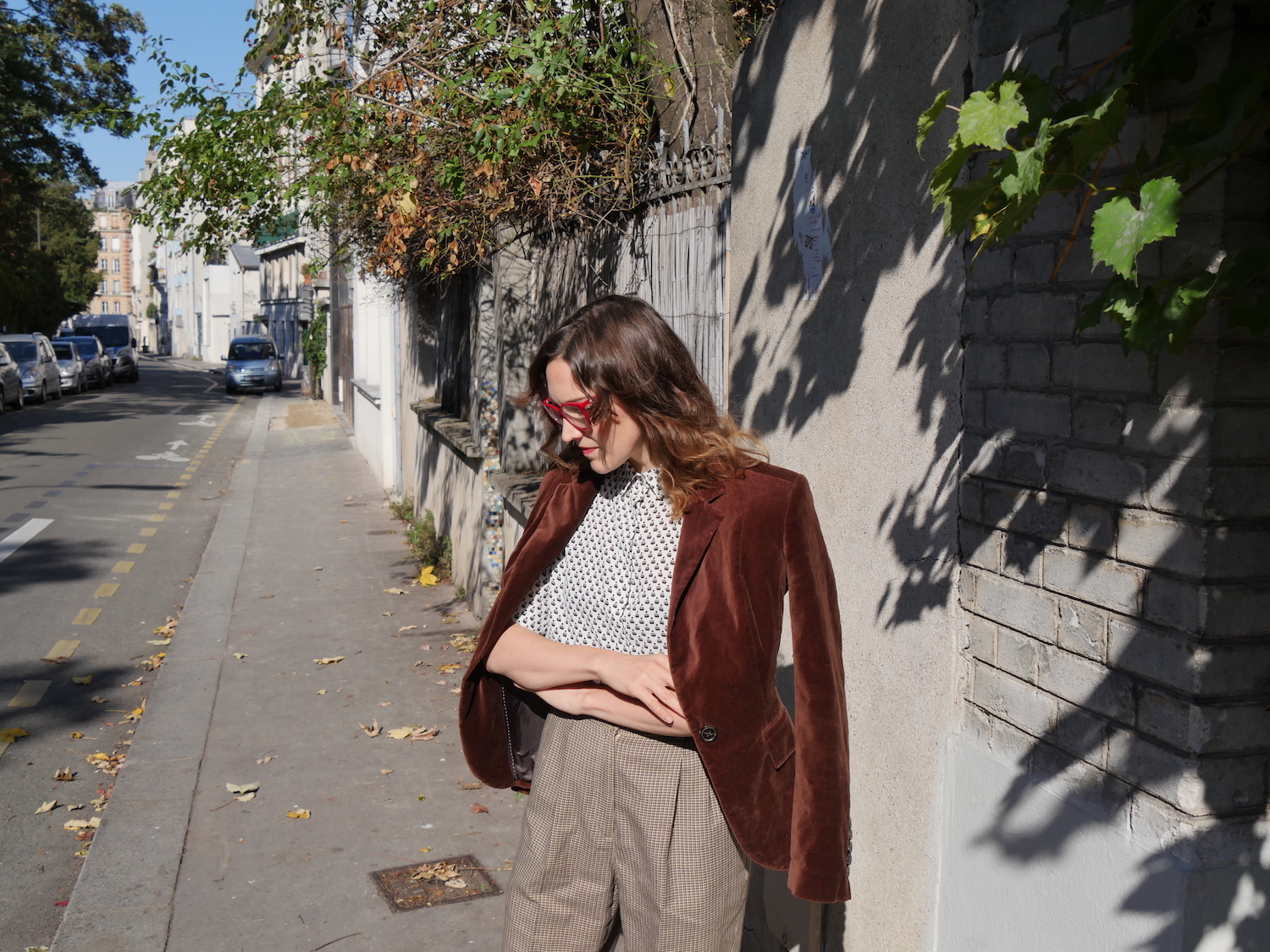A couple of weeks ago I did an online exam for the course Textiles, consumption and sustainable development, which I participated in this autumn. One of the questions was to consider how we as textile consumers could live in a more sustainable way. From a theoretical point of view it was kind of easy to answer: stop buying more and more clothes, invest in quality clothes, shop in your own closet, take care of your textiles and wash them according to instructions and of course, above all, do everything you can to lengthen the life cycle of your garments.
Yes, in theory this is easy, but what about practice? I mean, yes, I can make myself a budget for how much new stuff I can buy or I can go to the second hand markets instead of buying new clothes. This is easy. That is what I am actually doing. I hardly ever visit any fashion stores nowadays. But this is not where the danger is. It is right in our hands every half an hour. I am talking about our cellphones. Think about how many times a day you look at Instagram pictures or some success stories on Facebook. This all makes a difference. Nowadays the fashion bloggers and it girls on Instagram are showing several new fashion trends and outfits every week for us to get excited about. I mean, how many times have you already seen that choker necklace or bomber jacket on Instagram? Or have you heard about contouring makeup?
The whole fashion industry seems to be a bit lost. Through social media channels and fashion influencers trends are changing so fast that even the fashion industry and above all the high fashion houses can’t keep up. Clearly two to four collections a year it is not enough. At the same time fashion shows are more about who is in the audience and street style images than actually about the shows. And then after six months when the clothes seen in the fashion show are on sale, it is kind of too late. The fashion world has turned their heads towards other trends. So fashion houses need to consider if it would be wise to make the collection available immediately after the show. Also, there is the fact that high street brands are bringing the upcoming trends to their stores much faster than the actual high fashion brands. Democracy? Maybe, for those who haven’t got that much money. But it is exploitation and bad working conditions for those who are making the clothes.
This all seems so ridiculous but it is as much reality as it is the “like” button in social media. It is hard not to be affected. Of course we can choose who to follow on Instagram, but still even you are not interested in what is in fashion, you kind of know what is on the menu for this season. Or you know it if you have seen a picture of Gigi, Kendall or Chiara. All these messages about who is wearing what are saying to us: buy it, buy more. Wear it like this, buy this super cool brand.
It is so ridiculous. Yes, you can say: “I don’t care”, but it is still easy to affect us. Think about how we lack self-discipline when we need to be without our mobile phones for a couple of hours. We can hardly go to bed at night without the phone next to us. This all tells about how vulnerable we are when it comes to the latest fashion or makeup trends. And it is not just young people but us we adults are affected as well. We are following the trends, too. Those who have money trade their handbags at least twice a year for the latest it bag. This says not about your personal style, it says you can be a part of the circle.
Yes, I am going far with my topic about acting in a more sustainable way, but still: where is the talk about ecological fashion? Or those images that support the idea of sustainability in fashion on social media? Of course there are some, but I am sure fashion influencers could do more, the same goes for the fashion industry.
But in one way the fashion influencers are looking at the future: they often borrow clothes from showrooms. This idea we should democratize more. Those borrow-a-garment stores should be everywhere. Also, we need to change our minds about ownership: we don’t have to own all those favorite pieces of clothing, especially what comes to evening wear. We should have the possibility to borrow them. I do know such stores exists, but this is still a concept that should be more available. This way we could kind of get that excitement of getting a new dress, we could consume in a more sustainable way and lengthen the life cycle of a piece of clothing.
Maybe this is going to be the future. Maybe the whole fashion industry just going to go even faster that more and more people are going to think “I don’t accept this” and start supporting more ecological and local brands. Maybe the fashion world and its influencers want to be a part of this kind of movement. Maybe sustainable thinking will be the next big trend the way that organic cosmetics and food are now.
Maybe.
The truth is that the whole fashion industry needs to change. As consumers we can be ahead of all this and start shopping more in our own closet and show that we can use its contents year after year. Show that life’s important message is somewhere else than tagging our clothes on Instagram.
The clothes that you see in this story were all picked up insecond hand markets.
